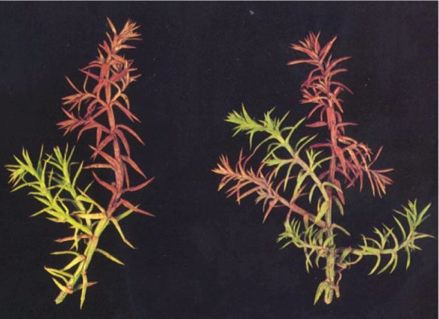PESTS AND DISEASES OF FORESTRY IN NEW ZEALAND
Phomopsis juniperivora
From Forest Pathology in New Zealand No. 13, Some minor fungi of conifers.
Based on I.A. Hood and C.J. Sandberg (1985)
Type of injury
Shoot death or cankering of nursery seedlings.
Diagnostic features
- Browning and death of one or more terminal or lateral shoots (Fig. 4).
- Localised canker formation on living shoots.
- Resin exudation from diseased tissues.
- Production of numerous, small (less than 1 mm in diameter), black, spherical, fruiting bodies breaking out through bark of diseased shoots.

Fig. 4 - Shoot dieback on seedlings of Cupressus lusitanica caused by Phomopsis juniperivora.
Host
Cedrus atlantica; Chamaecyparis lawsoniana; Cryptomeria japonica; Cupressus lusitanica; C. macrocarpa; Juniperus sabina; Larix decidua
Distribution
Identified from several nurseries throughout the country.
Disease development
Spores are produced in large numbers and gain entry through wounds. The disease is not fatal to vigorous seedlings.
Economic importance
Of minor significance.
Control
Not considered necessary.

 Farm Forestry New Zealand
Farm Forestry New Zealand

